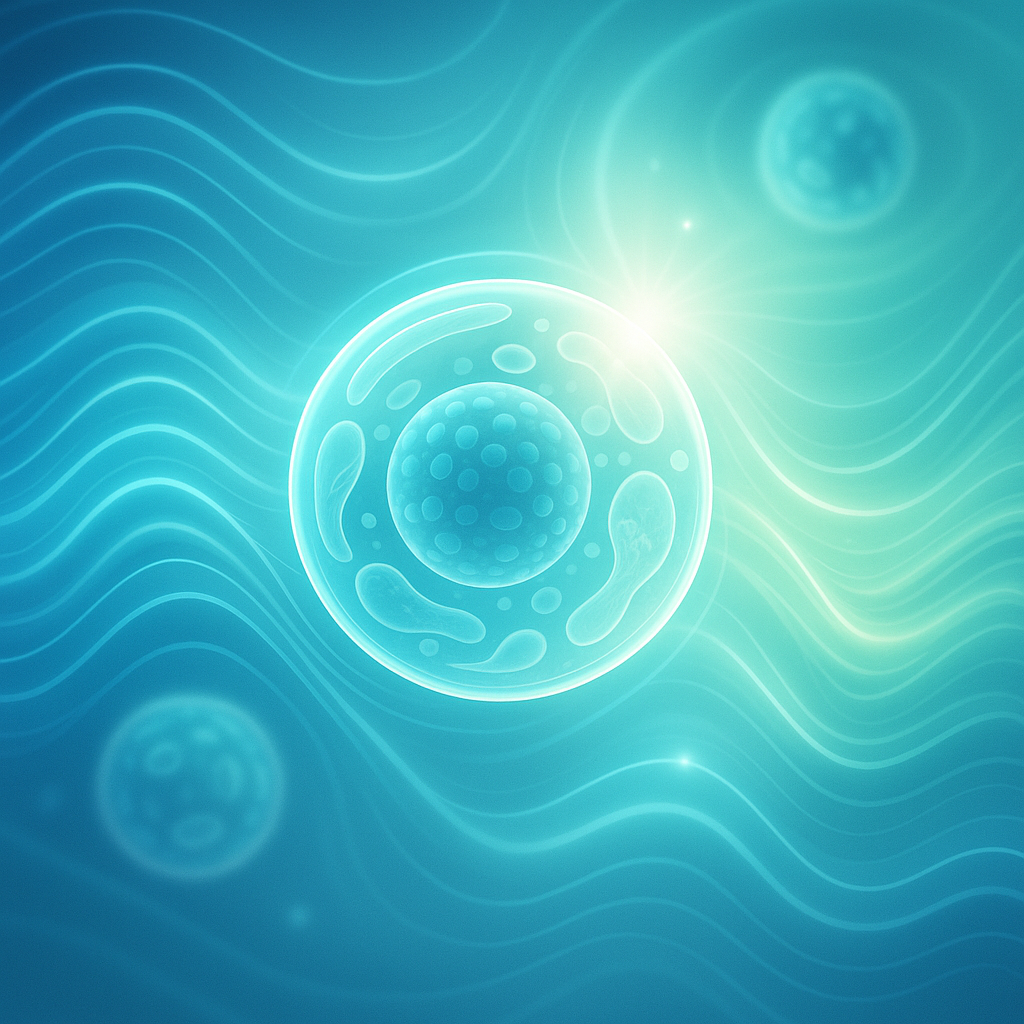
Electromagnetic fields and cell biology:
New findings from biophysics
Introduction: From mysticism to science
For decades, research into bioelectromagnetic phenomena had to contend with the stigma of mysticism. From Franz Anton Mesmer and his "magnetic cure" to modern pseudoscience, the field remained susceptible to charlatanism. At the same time, however, a well-founded scientific debate developed - particularly with regard to the effect of weak electromagnetic fields on biological systems. Today, there is sufficient experimental evidence that these fields can trigger physiological effects, even if their energy is barely higher than thermal noise.
Biophysical principles: How EM fields affect cells
In contrast to ionising radiation, electromagnetic fields (EMF) do not affect cells by supplying energy, but by modifying the body's own electrical fields. These fields exist at all levels of the biological hierarchy - from molecules to the organism. The focus is particularly on the cell membrane, which forms an electrical double layer that acts as a capacitor.
The electric field in the cell membrane
The membrane has an extremely low electrical conductivity and a high resistance, which makes it an important site of electromagnetic interaction. The transmembrane potentials, usually in the range of 10-100 mV, lead to electric field strengths of up to 10⁷ V/m. These potentials can be influenced by superimposing external EM fields, which changes ion currents and cell processes.
Possible mechanisms of the field effect
The effect of weak EM fields is complex and cannot be explained by a single mechanism. Several hypotheses are currently being discussed:
- Modification of membrane proteins
- Change in ion distribution
- Phase transformations in membrane lipids
- Cooperative effects and resonance
Frequency ranges and therapeutic applications
In practice, EM fields are mainly used in the ELF and SLF region (16-60 Hz) or as high-frequency fields (e.g. 27 MHz, 450 MHz), often combined with low-frequency modulation (PEMF). However, scientific analysis shows that these applications are mostly technically based - not biophysically optimised. Theoretical models such as those of Tsong or Markin suggest resonance frequencies in the range of 10³-10⁷ Hz - a range that has hardly been used in practice to date.
The path of action: from the cell to the organism
The effect of electromagnetic fields typically occurs in several stages:
- Physical interaction with molecules
- Biological reaction such as altered ion flows
- Systemic amplification via e.g. calcium signalling cascades
The calcium ion (Ca²⁺) in particular is seen as a central "secondary messenger" that can be modulated via EMF - with far-reaching physiological consequences.
Conclusion: potential and unanswered questions
Research clearly shows that even weak EM fields can influence biological systems. Nevertheless, the underlying mechanisms are not yet fully understood. Many medical applications are not based on optimised frequency concepts, but on technical conditions. The authors therefore call for future therapies to be more closely aligned with biophysical findings - in particular through a targeted selection of frequency ranges.
